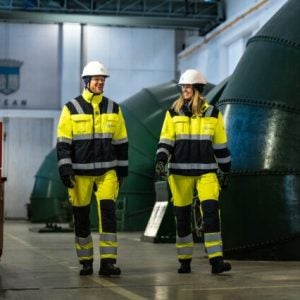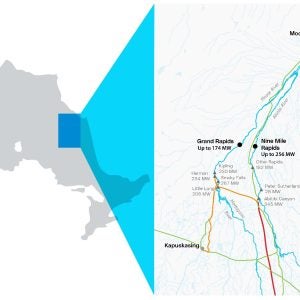
Idaho Falls Power’s Lower Bulb Hydropower Plant
Municipally owned utility Idaho Falls Power and the Idaho National Laboratory (INL) have carried out tests to see how a US city’s hydropower plants can be made more stable and responsive during emergencies. The tests involved integrating energy storage and modifying the control systems to help them balance changes in electricity quickly.
The city of Idaho Falls owns five power plants on the Snake River, from the Upper Power Plant north of the city to the Gem State Dam just to the south. These plants generate enough power to meet about one-third of the city’s needs. The rest of its power is purchased from generators across the region.
Idaho Falls first reached out to INL after an outage in early December 2013 left about 53,000 southeast Idaho residents in subzero cold for three hours. With several municipalities scrambling to return service to their customers, Idaho Falls Power was ordered to shed 35MW in 30 minutes.
In 2016, Idaho Falls and INL began investigating “black start” and “islanding” capabilities. Black starting is basically jump-starting a local grid with equipment and electricity that’s immediately available. Islanding involves powering the local grid independent of the larger regional grid.
By themselves, small hydropower plants like the one in Idaho Falls can’t restart a localized grid during a widespread outage. But with energy storage, these plants may be able to provide adequate frequency and voltage stabilization to avoid disruption in customer service.
“It’s exciting to show how innovation can help these small hydropower plants serve Idaho Falls residents in a new way,” said Thomas Mosier, INL’s energy systems group lead. “The grid is changing very rapidly. The tests performed this week demonstrated that small hydropower plants like Idaho Falls’, combined with innovative controls and integrated energy storage technologies can ensure the lights stay on for local customers regardless of what’s happening to the regional grid.”
“It is important that we have the confidence and capacity to provide for our community in the event of an emergency,” added Idaho Falls Mayor Rebecca Casper. “INL employees live in this community and so a collaboration is very meaningful because it will not just help Idaho Falls, but the surrounding communities as well.”
The recent tests were especially focused on ultracapacitors, which, unlike batteries, can deliver quick bursts of energy then just as quickly capture excess power. This relieves pressure from the hydropower plants, giving them more time to catch up to changes in demand.
To isolate the city’s generators and test them in various configurations, two 6MW load banks were brought in.
In preparation for the tests, American Governor Group and INL measured the hydropower plant’s response and used these observations to adjust digital models. The digital models were fed into INL’s Digital Real-Time Simulators, which then simulated possible test outcomes, helping to fine-tune the process and reduce risk of equipment damage during field demonstration.
“If we can solve this, it opens up capabilities for a lot of communities that have small hydro systems like ours,” said Ben Jenkins, who is managing the project for Idaho Falls Power. “It helps Idaho Falls, but it could have a much broader impact across the national grid.”

Two 6MW load banks (in blue) were brought in to isolate the city’s generators






